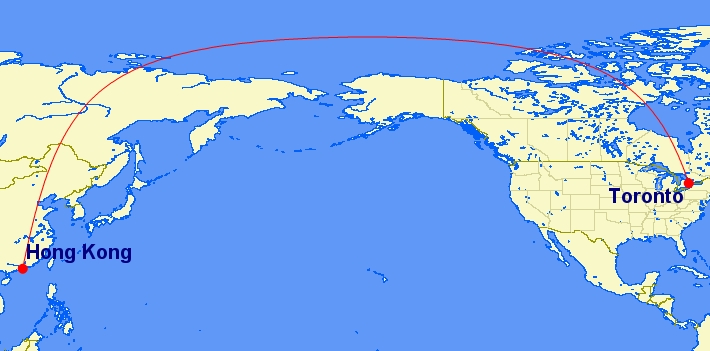Let me point out that for the purposes of logging flight time, night is defined under 14 CFR 1.1 as follows:
Night means the time between the end of evening civil twilight and the beginning of morning civil twilight, as published in the Air Almanac, converted to local time.
This means that sunset is not the deciding factor, but rather the published start and end times of civil twilight.
For the flight details you give, the transition to legal night would probably occur almost two hours into the flight somewhere near Little Rock, Arkansas, around 23:30 UTC at the end of local civil twilight. The specifics of that transition time and location will depend on ground speed, cruise routing, time spent in the departure routing and climb, and so on.
This same—or a similar—issue arises for slow aircraft over even relatively short distances. Any pilot flying any aircraft during the transition into or out of civil twilight where the time of civil twilight varies between the departure and destination points will face difficulty in determining exactly where and when the transition into legally loggable night time occurred.
When I was logging my first 100 hours of night time, I paid close attention to civil twilight on my flights so as to ensure I was not missing any loggable night time (and to ensure I wasn't incorrectly logging night time). Most of my 100 hours of night flight time took place in a C172 flying cross country into sunset or sunrise. To calculate the actual point where civil twilight began or ended, I consulted civil twilight tables based on my route of flight and interpolated the times to find the proximate location and time that night began or ended.
Now I care less about the amount of night time I have, and generally just log a leg as night if that leg took place entirely during night conditions. I suspect many professional pilots do the same.
14 CFR 61.51 requires a pilot to log:
(1) Training and aeronautical experience used to meet the requirements
for a certificate, rating, or flight review of this part.
(2) The aeronautical experience required for meeting the recent flight
experience requirements of this part.
The pilot must include the following information in that log:
(3) Conditions of flight—
(i) Day or night.
Logging night time is required if to be used toward a certificate such as the 100 hrs required the ATP. However, once beyond that requirement, logging night time is only required when documenting recency of flight experience such as night landings.



